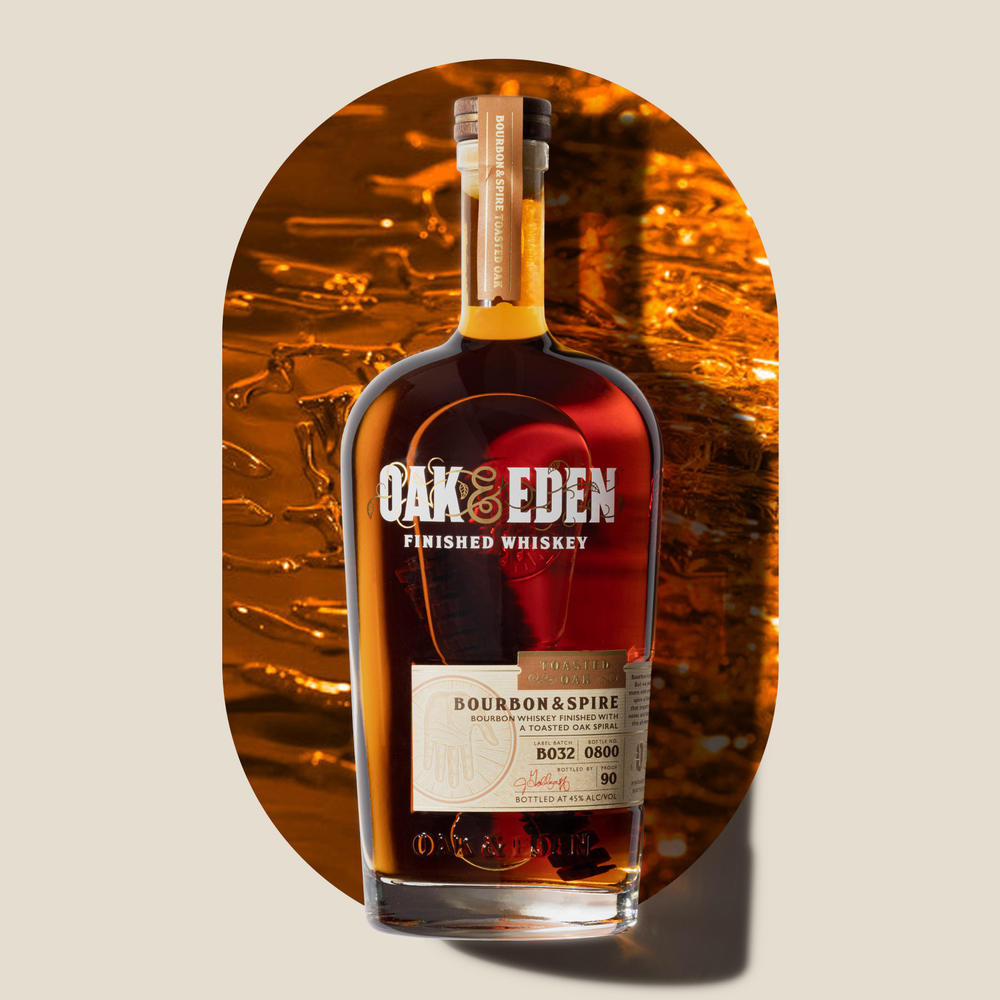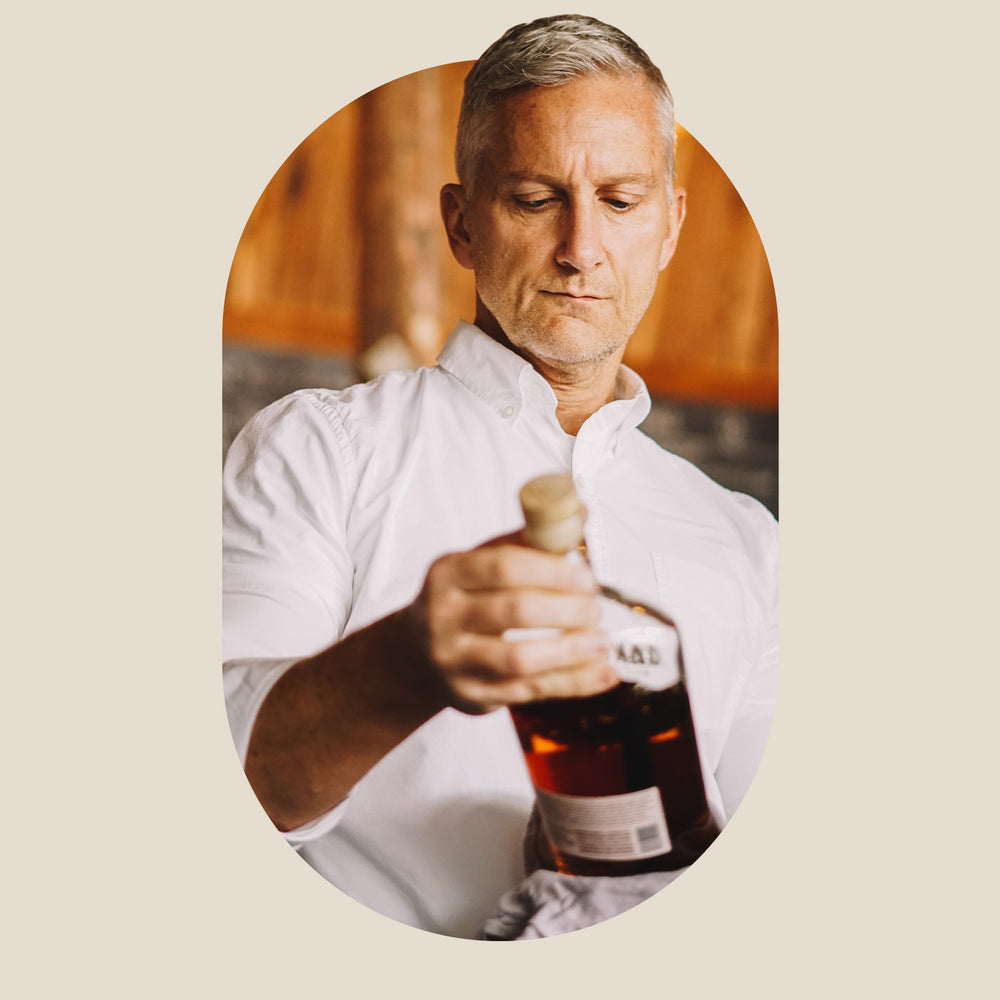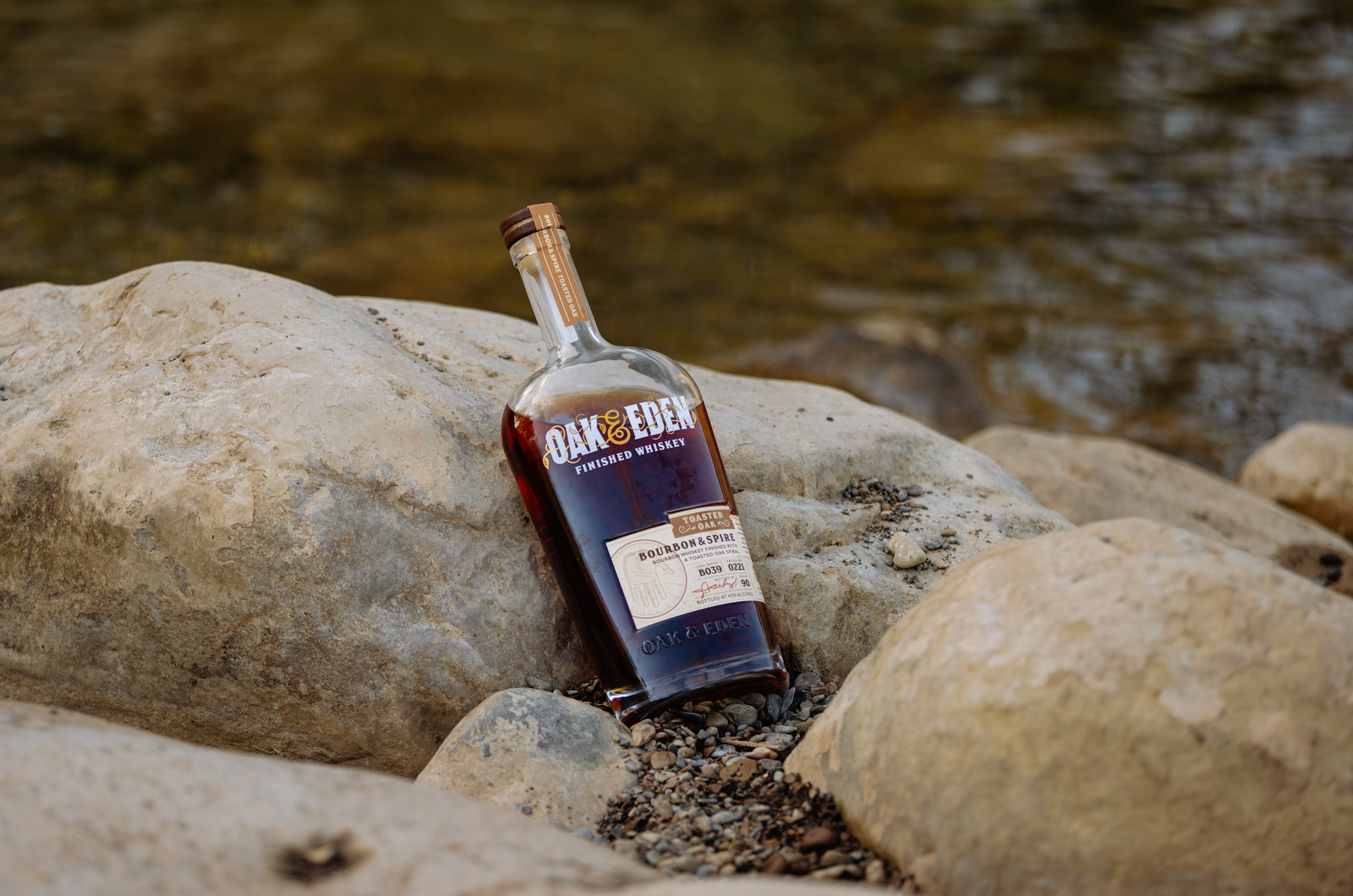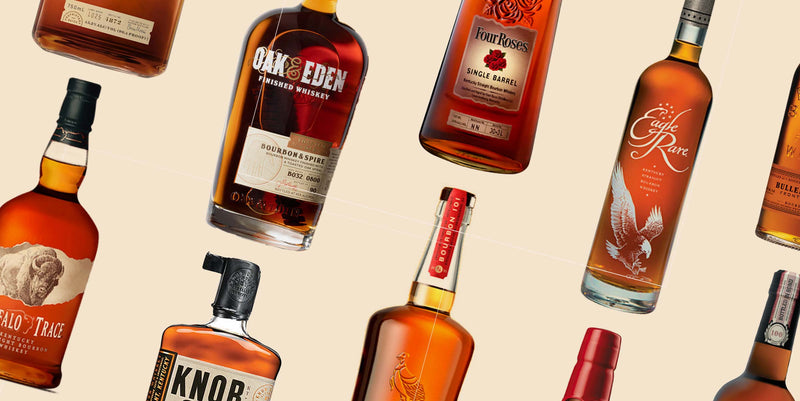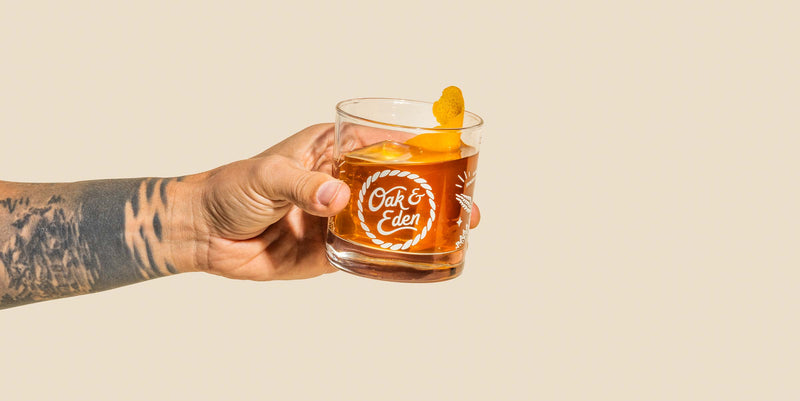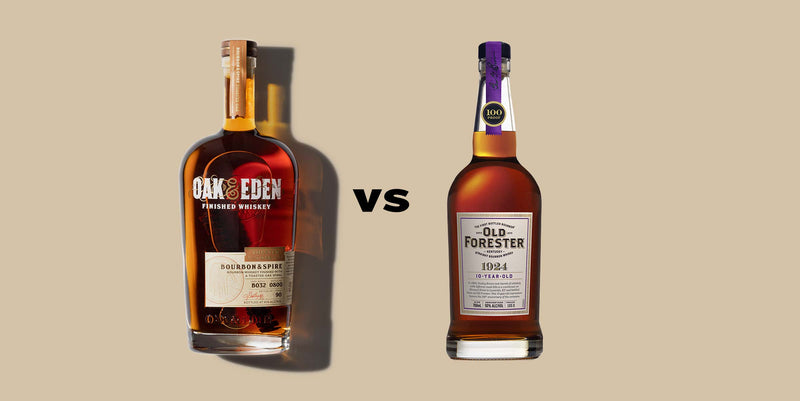How Much Alcohol Is in Whiskey?
When it comes to alcoholic beverages and distilled spirits, there are quite literally hundreds, if not thousands, of different options depending on how you lump or divide categories. From cognac to tequila to regular beer, there are plenty of options. While there are many ways to think about alcoholic drinks, one important aspect to consider is alcohol content.
Alcohol content, or alcohol percentage, can range from three to five percent in the lightest beers to 80-90% in the strongest pure alcohol moonshines. The alcohol content of a drink is one of the major elements that help divide the different types of alcohol as well as separating beer, wine, and liquor.
Whiskey is our alcohol of choice, and if you're here then it's probably yours too. So let's take a deeper dive into our favorite liquor and discuss just how much alcohol there really is in whiskey.
What Is Alcohol Content?
Alcohol content is simply the measurement of how much alcohol is actually in a given liquid. This is usually expressed as a percentage of the amount of alcohol relative to the total volume of the liquid, which is expressed as ABV, or alcohol by volume.
The ABV of a drink greatly impacts the amount of alcohol that is actually in a given drink. This is why the standard pours for beer, wine, and liquor are different. While the size of each pour may be different, the actual amount of alcohol in each is relatively similar, giving you a general idea of the amount of alcohol you are consuming.
The standard drink serving sizes are 12 ounces for beer, five ounces for wine, and one and a half ounces for hard liquor. The average ABV for these drinks is five percent for beer, 12 percent for wine, and 40 percent for liquor. This gives each standard drink about 14 grams of alcohol.
How Much Alcohol Is in Whiskey?
The alcohol content of alcohol is a seemingly simple question but the reality is there is no simple answer. Or perhaps a more accurate way to say it is that there are many different answers that could be correct for how much alcohol there is in whiskey.
At different points during the whiskey-making process, you may have very different answers. Here is a deeper dive into the alcohol content of whiskey as it moves through the process from grain to bottled liquor.
Fermenting The Grains: Seven to 10 Percent ABV
The first step where alcohol is produced in the whiskey-making process is during fermentation, where the grain mash is ground, mixed with hot water and yeast, and then left to ferment. This allows the yeast to consume the sugars, leaving behind alcohol over the course of several days.
When the fermentation process is complete you are left with a liquid which is called the distillers beer, which has higher alcohol content than, say, a weak port wine.
Distillation: 80 Percent ABV
The very next step in the process takes our whiskey-in-the-making to its highest alcohol content overall. Distillation is the process that allows for the creation of high-proof alcohols. Distillation involves at its core the boiling of the alcohol.
Because alcohol has a lower boiling point than water and other liquids, it will evaporate first. By collecting this gas and condensing it you can get a more concentrated, purer alcohol. There are two main ways that this is done in the world of alcohol making — pot distillation and column distillation.
With modern distillation techniques, it is possible to get very close to 100 percent alcohol, however, few liquors are ever distilled to that level. Whiskey can typically only be legally distilled to 160 proof, or 80% ABV. The less you distill, the more flavors from the original grain mash or whatever was fermented are present in the final liquid.
In To The Barrel: 62 Percent ABV
While whiskey can be distilled to up to 160 proof or 80% ABV, it cannot legally enter the oak barrels with that much alcohol. It must be watered down to no more than 62.5% ABV, or 125 proof before going into the barrel. This means that the very most alcoholic whiskey that you can buy is 62.5% ABV. If it is more than that it is technically a moonshine or other type of liquor.
Into The Bottle: 40 Percent ABV
Finally, the whiskey is ready to enter the bottle, where it is often watered down yet again. The crucial key is that it cannot be watered down too far at this stage, to fit your minimum bottling requirement.
Whiskey may not be bottled at less than 40% ABV, or 80 proof. This means that every bottle of whiskey lies somewhere in the range of 40 and 62 and a half percent ABV.
There are some whiskies available that are labeled as "barrel proof", which usually means the whiskey is around 60 percent ABV, and there are other whiskies that usually hover right at the lower limit.
Why Is Alcohol Content Important?
By this point with all of these numbers and different alcohol contents, you're probably starting to wonder why alcohol content is even important. Does it really matter if my whiskey is 60% ABV or 40% ABV?
Well, the answer is a resounding yes, it does matter. The alcohol content of the beer, wine, liquor, or mixed drink that you are consuming plays a major role in the impact the alcohol will have on you. It’s important to avoid alcohol poisoning and keep your bodily limit in check.
ABV and BAC
The ABV of alcohol by volume of your drink plays the most important role in determining your BAC, or blood alcohol content. Your BAC is a measurement of the alcohol to blood in your body, which serves as a measurement of the level of impairment caused by the alcohol.
The ABV of alcohol is typically pretty simple; it can be found on the label of any alcohol bottle you purchase. Your BAC is difficult to estimate, as it is based largely on your height, weight, fitness level, the amount of food you've eaten, sex, and other variables. That being said, the standard drinks are useful in estimating the impact that each drink may have on you, as long as you know your approximate height, weight, and sex.
There are plenty of calculators available online which will tell you an estimate of your BAC based on the drinks you've consumed, their ABV, the time over which they were consumed, etc. Knowing this information, as well as the effects of alcohol on different blood alcohol contents, you can achieve the right amount of buzz for you.
ABV Increase = BAC Increase
While it is not always true that drinking higher ABV drinks will cause you to have a higher BAC, a single shot of whiskey that is 40% ABV will not cause your BAC to rise the same amount as a single shot of 60% ABV whiskey.
This is because the alcohol content of the two shots is different, despite being the same volume of liquid. So, if you are drinking whiskey that is a higher ABV, or any liquor that is a higher ABV than is standard, you should consider that when determining your consumption.
How Much Alcohol Is in Mixed Drinks?
The final consideration to make in our discussion of the alcohol content of whiskey is the alcohol content of mixed drinks. Figuring out the alcohol content of a mixed drink or cocktail is a real challenge unless you know the exact recipe of the cocktail. Unless you are ordering a standard bar classic, you likely won't know the exact recipe.
That being said, most mixed drinks contain one to two standard drinks. Feel free to ask your bartender for an estimate and they are almost certain to be able to give you an idea of the ABV of any cocktail on the menu. Using your taste buds is not a great way to estimate ABV, as cocktails can often mask the flavor of the alcohol content better than traditional alcoholic drinks like beer, wine, or hard liquor.
This is because most cocktails contain sugarcane sugar, and some cocktails contain a lot of sugar, which helps to cover the taste of the alcohol. In most recipes, the cocktail will have more sugar than alcohol by volume, which can give you a false sense of security. If you aren't sure, just ask.
How Much Alcohol Is in Whiskey: Takeaways
Whiskey is hard liquor, making it one of the stronger types of alcohol available. But that being said, there is plenty of variation in the alcohol content of whiskey both throughout its production and in the final product.
Through production, whiskey varies from as little as seven percent alcohol when the yeast first produces alcohol in the mash all the way to 80 percent alcohol at the end of distillation. Once it is in the barrel and finally the bottle the liquid must be between 40 to 62.5% ABV.
When drinking, it is best to keep in mind ABV and the standard drinks so that you can maintain and manage your level of intoxication as you see fit. Make sure to drink responsibly.
Here at Oak & Eden, we have both standard whiskey and barrel strength whiskey available for your consideration. You can check out our fine whiskey offerings here.
Sources:
An Intro to ABV, ABW, and High-Point Beer | The Spruce Eats

